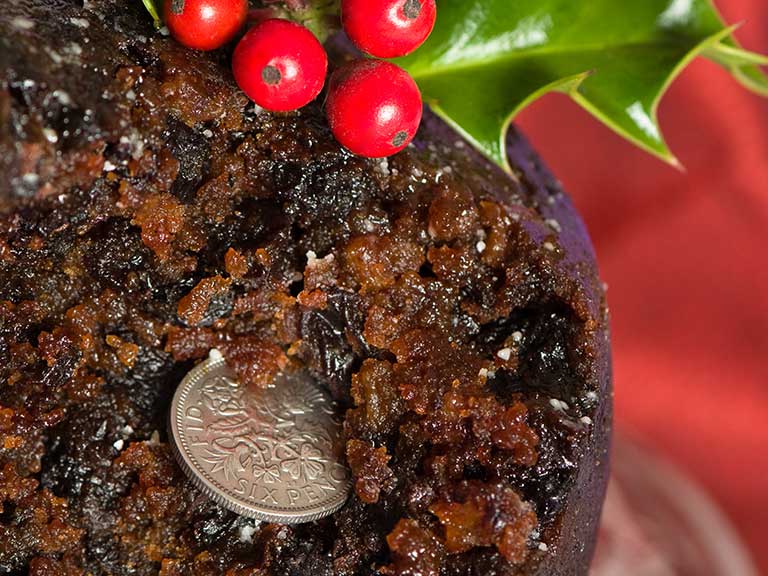
The sixpence was first struck in 1551 during the reign of Edward VI. This was the precursor to the shilling, seeing its value halved from twelve pence to six; establishing itself as a popular fixture in British pre-decimal coinage.
The sixpence, established in its own right, has often been given the nickname ‘tanner’ and later in history became a symbol of good fortune and luck. Many tuck away a sixpence in their shoe on their wedding day, or give as a christening gift; while one of the most symbolic is the sixpence served up in a slice of Christmas pudding.
This Christmas tradition goes back centuries; believed to have been brought over to Britain by Prince Albert, the husband of Queen Victoria. On the Sunday before Advent, families gathered in the kitchen to help make the annual Christmas pudding. A silver sixpence was then placed into the pudding mix, and every member gave it a stir. The family member who then found the sixpence in their piece of pudding on Christmas Day would the thought to enjoy good luck in the year to come.
The sixpence has also been well established in folklore, celebrated in nursery rhymes, and featured in a story about a crooked man and a crooked house. This ties the sixpence to its other given nickname, the bender, meaning that a sixpence would allow you to go out and drink for the day.
Following Decimal Day in 1971, the sixpence was not continued and many were disappointed that a continuation was not included in the new decimal currency. Sixpences did not disappear straight away though; they were used still until they were finally demonetised in 1980.
You can find out more about the sixpence – and other pre-decimal coinage – in our Ask the Expert video series here. You can also view our 2020 Pre-Decimal 50th Anniversary gold sovereign range here, including the Half Sovereign, which features the last sixpence.
